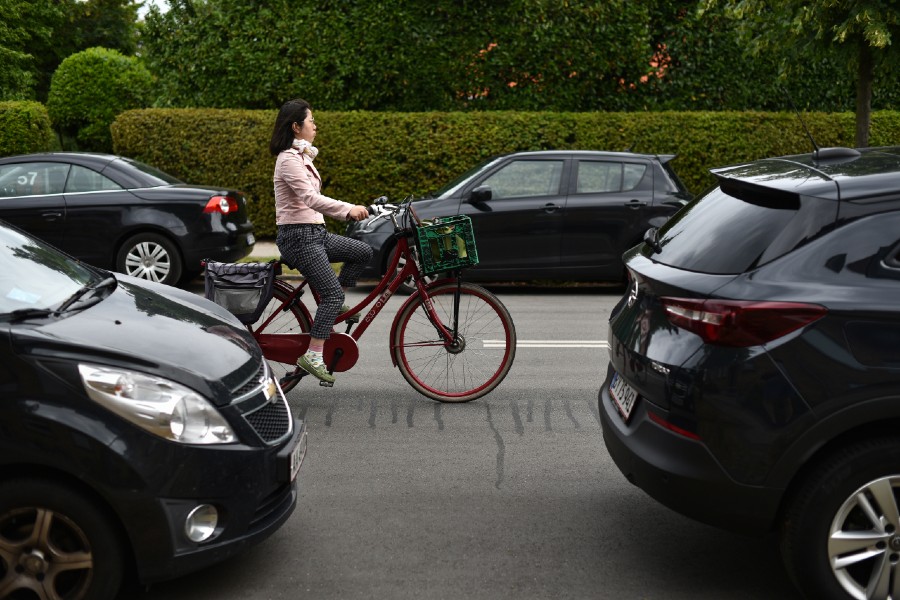Pedal past any community hotspot, busy roadway, or even pedestrian path, and you’ll quickly notice that electric bikes have officially taken over.
Whether it’s to commute to work, get fit or just have fun –more Aussies have sparked an interest in riding e-bikes than ever before.
Equipped with an electric motor and a battery, e-bikes provide the rider with gentle power assistance as they peddle, making riding easier, quicker and more enjoyable.
But while they’re great for your health and the environment, that doesn’t necessarily mean owning one is right for you.
With a hefty price tag and required maintenance, there is plenty to consider before charging down to your local bike shop.
So pump the breaks for just a second as Build-it brings you our biggest pros and cons to help you decide if owning an e-bike is “wheely” right for you.
Pros
1. Make uphill slogs feel like a downhill breeze
We hate to pedal the obvious, but riding an e-bike around town is a heck of a lot easier than riding a traditional bicycle.
The extra oomph provided by the bike’s motor often feels more akin to riding an electric scooter rather than a bicycle at all.
While those dreaded uphill commutes transform into the equivalent of riding on the flat on a traditional bike.
All this extra help means it’s less likely you’ll arrive at your destination drenched in sweat or tired before the day has even begun.
2. ‘Watt’ about these $$$ savings!
Swapping out four fossil-fueled wheels for two electrifying ones not only helps save the environment but also helps keep cash in your wallet too.
While a brand new e-bike can cost between $1,000 and $9,000, it’s still a lot less than purchasing a new car.
No sooner have you sat in the saddle than those savings start to recoup the cost of the bike itself.
E-bike retailers say owners can charge a full battery for 10–15 cents, which equates to around $20 per year for the average commuter.
Compare that to the results of a recent study by the RACV, which found that the cheapest car to own and operate in Australia costs the average driver $734.84 per month, and you can how an e-bike can pay itself off in just a matter of months.
3. Charge through that commute
Hoping on an e-bike can make commuting to work, home or the gym far more convenient than getting behind the wheel.
Peak-hour traffic jams are a thing of the past for the average e-cyclist, who zooms past backlogged bumper-to-bumper jams in the comfort of a spacious bicycle lane.

Meanwhile, there is no need to park miles from the office or pay through the nose for parking, either, with many metropolitan centres now offering accessible bike storage facilities.
And if there isn’t one near you, their smaller size and portability means there’s always plenty of space in most office buildings to store your e-bike away for the day.
Cons
1. Costs you’ll want to slam the brakes on
Unfortunately, owning an e-bike costs a lot more than a traditional bicycle.
With top-of-the-range models often exceeding $10,000, users must also fork out an additional $300 a year in servicing costs and the price of any necessary repairs.
An issue with the motor or battery can quickly shift gears on the financial costs, often leaving owners with buyer’s remorse.

However, avoiding budget options and utilising warranties should keep you on the road year-round.
2. Running out of juice
Don’t get us wrong, riding an e-bike is way easier than choosing a traditional bicycle –that is, until your battery runs flat.
Running out of battery mid-ride can ruin your day, as the e-bike’s extra weight makes it far more challenging to peddle than a regular bicycle.
A lack of e-bike-specific infrastructure means it’s nearly impossible to charge your ride mid-route anywhere in the country.
So god-forbid you face any arduous uphills or slopes for the rest of the route.
Weight is one of the most significant downsides to owning an e-bike, with its extra components making many models nearly impossible to carry up a large flight of stairs if necessary.
3. Poor infrastructure means less safety
Compared to other, more economically developed countries, Australian cyclists still lack high-quality cycling infrastructure.
A lack of quality bike paths can, in turn, increase unnecessary safety risks for e-bike users, who are often travelling at more consistently fast speeds than regular cyclists.
Meanwhile, running out of charge mid-route can cause a rider to dangerously push his e-bike along the middle of a bike path or the side of the road, increasing the risk of a collision.
Lastly, e-bikes contain lithium-ion batteries which, at times, have been known to unexpectedly explode and start fires – particularly in cheaper e-bike models purchased from overseas that don’t meet Aussie standards.







